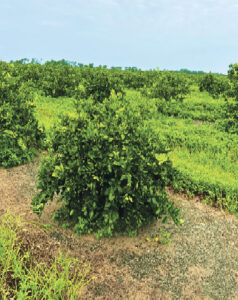By JOE SAMNIK,
Forensic Consulting Arborist

One of the advantages of growing old in the marketplace is the ability to look back upon what was.
As I reflect more than 57 years of practice, I can tell you exactly where I was and what I was doing when tree codes first were established in Florida.
Before that date, trees could be removed at will. Wholesale destruction. Clearcutting. Nothing stood in the way of the developer or the homeowner intent on removing trees.
The radio crackled a bit, but crystal clear was the news about requiring a permit to remove trees. It was shocking; even on your own property, and even if you planted the tree, a permit for removal would be required. Unbelievable! What had become of property rights?
Sure, requiring the developer clearcutting thousands of acres was understandable; no doubt the wildlife would concur.
But me, in my own backyard? Unbelievable.
Of course, as government became involved in permitting, that meant a revenue stream of predictable income.
The removal permit fee did not stand alone for very long. Soon came the obvious remedial action of replanting that which was taken. And if there was not enough room to plant the scores of replacement trees calculated by various state agencies, there was the “tree bank” that one could contribute money into in lieu of planting replacement trees.
This was brilliant.
Soon, government coffers swelled with developers eager to gain building permits with mitigation charges being passed along to the home buyer.
The marketplace at work.
As the decades passed and tree-removal codes and penalties became the norm, new formulae were added to the confusion and frustration that all had become accustomed to: global warming, air pollution, and the like. And to the applicant hoping to adhere to the law, be of mind that every city, town, community, and county have tree codes. And they are pages long.
As social media has become indispensable, planting trees is now in-vogue.
Cities compete with one another in the sheer number of trees that will be planted. A million trees in Central Park? No problem. Re-forest the cultivated rain forests? Not an issue. The citizen-activist groups are now in charge of our environment as new trees are planted at a mathematical rate that would shock Archimedes into stupidity.
But a funny thing happened on the way to getting the shovels for planting; the cost of purchasing and installing a tree juxtaposed with the benefits that trees provide.
Research has demonstrated that it takes about 30 years for a tree to pay for itself.
The average urban tree only lives 10 to 15 years. Will little Johnny please come to the front of the classroom and explain to us all how this works?
With emphasis on the math, Johnny, please.
Another omitted issue in the rush to save our planet is the maintenance required to ensure the replacement trees’ survival. Don’t you hate it when all these details interfere with our goals? And who is overseeing the installation of these replacement trees?
Well-meaning folks who have never held a shovel in their hand are negligently installing trees and quickening their demise.
Johnny?
I can only presume that someone somewhere has come up with a solution of what to do with all the dead replacement trees that will soon litter our communities and bring the local landfills to capacity.
Perhaps we could dump them into the oceans. Out of sight, out of mind.
As my mind goes back to reflecting on the very first news reports some 50 years ago requiring a permit to remove a tree, I cannot help but wish that permits would have instead been issued to our elected leaders who allowed Florida to become so overpopulated without the proper infrastructure to support it.
I wish Johnny well.●















































